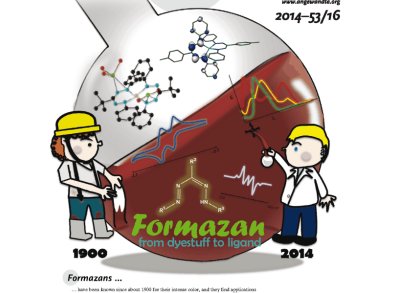Organometallic complexes normally undergo electrochemical processes where electron transfer and a change in oxidation state of the metal centre(s) are involved. Recently, research has focused on complexes where the metals are electrochemically inactive, but the ligands are redox active. These are called redox active or redox non-innocent ligands.
Edwin Otten, University of Groningen, The Netherlands, and colleagues have described the synthesis of bis(formazanate) zinc complexes. As they show well-behaved redox-chemistry, with the ligands functioning as a reversible electron reservoir, the bis(formazanate) zinc compounds can be isolated in three redox states: the neutral, anionic and dianionic complex.
The stability of these ligand-based radicals (metallaverdazyl radicals) is a result of the delocalization of the unpaired electron over four nitrogen atoms in the ligand backbone.
The team fully characterized the neutral, anionic, and dianionic compounds (L2Zn0/–1/–2) by single-crystal X-ray crystallography, spectroscopic methods, and DFT calculations.
The nitrogen-rich (NNCNN) backbone of formazanates opens the door to redox-chemistry that is otherwise not accessible. The researchers currently investigate the use of coordinated formazanates as reversible electron reservoir in (catalytic) reactions.
The picture, which is taken from the inside back cover of Angewandte Chemie, was drawn by Hsin-Wei Lin.
- The Formazanate Ligand as an Electron Reservoir: Bis(Formazanate) Zinc Complexes Isolated in Three Redox States,
Mu-Chieh Chang, Thomas Dann, David P. Day, Martin Lutz, Gregory G. Wildgoose, Edwin Otten,
Angew. Chem. Int. Ed. 2014, 53, 4118–4122.
DOI: 10.1002/anie.201309948



